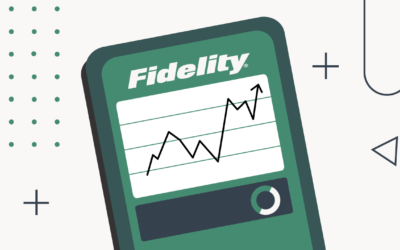Key Points
- Massive changes to student loan repayment plan options.
- Student loan borrowing limits are capped for graduate and parent borrowers.
- New rules impacting everything from Pell Grants to 529 plans.
President Trump signed the One Big Beautiful Bill Act into law on July 4, 2025 (H.R. 1). It passed by a vote of 51 to 50 in the Senate, with Vice President JD Vance breaking the tie, and by a vote of 218 to 214 in the House.
This legislation extends the Tax Cuts and Jobs Act of 2017 and adds several new provisions. In particular, it makes several changes to federal student aid programs. The changes to federal student aid programs involve more than $300 billion in cuts, most of which come from the official repeal of the SAVE repayment plan.
The One Big Beautiful Bill Act has been supported by Republicans and opposed by Democrats, passing along party lines. It was called “One Big Mistake” by Sameer Gadkaree, President & CEO of The Institute for College Access & Success (TICAS).
The legislation involves significant changes to federal student loan programs, federal grant programs, federal education tax credits, and federal college savings programs.
Would you like to save this?
Changes To Federal Student Loan Borrowing
The legislation repeals the Grad PLUS loan program, caps the Parent PLUS loan and sets new loan limits for other loans.
Parent PLUS Loans
Federal Parent PLUS loans will be subject to an annual $20,000 limit and a $65,000 aggregate limit per dependent student. The aggregate limit cannot be restored by paying down the loan balance or through loan forgiveness or loan discharge programs.
There is a three year grace period on the new caps, as long as a parent borrowed before June 30, 2026. However, there are changes to Parent PLUS repayment for new loans that could be problematic for families.
Graduate School Loans
The Grad PLUS loan will be replaced with new unsubsidized Federal Direct Stafford Loan limits for graduate students of $20,500 per year and $100,000 in aggregate. The annual loan limit will be $50,000 per year and the aggregate loan limit will be $200,000 for professional school students (e.g., MD, LLB and JD).
These changes take affect for new borrowers as of July 1, 2026. Students who are enrolled in a program of study as of June 30, 2026 and who have received at least one loan for this program as of June 30, 2026 may continue borrowing under the old loan programs and loan limits during the expected remaining time to a credential or three years, whichever is less.
Other Loan Limits
There is a lifetime aggregate student loan limit of $257,500. This lifetime loan limit does not apply to Parent PLUS loans. The lifetime limit cannot be restored by paying down the loan balance or having loan amounts forgiven or discharged.
Annual loan limits are prorated based on enrollment status.
College financial aid administrators may set lower annual loan limits on a per-program basis.
Impact Of The New Loan Limits
The changes in loan limits for parents of undergraduate students and for graduate and professional school students will shift some borrowing from federal student loans to private student loans when the students reach the new loan limits. Low-income students may be negatively impacted, since they are less likely to qualify for private student loans. The new loan limits may also shift some enrollment toward lower-cost programs, such as in-state public colleges.
Based on data from the 2019-2020 National Postsecondary Student Aid Study (NPSAS:20), the most recent data available, a significant percentage of students graduated with more debt in 2020 than allowed under the new loan limits.
- 4.8% of students in Master’s degree programs
- 27.5% of professional school students in MD programs
- 59.9% of those in Dentistry programs (DDS, DMD)
- 12.7% of those in Pharmacy programs (PharmD)
- 9.3% of those in Law programs (LLB or JD)
- 6.0% of students in doctoral degree programs (5.0% for PhD and 9.0% for EdD)
- 2.7% of parents of undergraduate students (9.2% of parents of undergraduate students in HBCUs)
Note that the new Parent PLUS loan limits may have a disproportionate impact on students at Historically Black Colleges and Universities (HBCUs), who are more than three times as likely to borrow more than the new aggregate limit. These loans are often repaid by the student, not the parent. But, the student loan limit may be too low to replace the excess borrowing by parents at these colleges.
The legislation will also eliminate federal education loan eligibility for undergraduate programs where graduates do not earn at least as much as high school graduates and for graduate programs where graduates do not earn as much as Bachelor’s degree recipients aged 25 to 34 for 2 out of 3 measurement years. This accountability requirement applies to just undergraduate and graduate degree programs and graduate certificate programs. It does not apply to undergraduate certificate programs.
Effectively, this is a new kind of gainful employment rule. Unlike gainful employment, which still exists, it applies to all colleges, not just for-profit colleges and non-degree certificate programs.
Changes To Student Loan Repayment Programs
The legislation changes student loan repayment plans and options for financial relief for borrowers who are struggling financially due to their student loans.
The legislation officially repeals the SAVE repayment plan and replaces the existing repayment plans with just two repayment plans for new loans.
The two new repayment plans include a Standard Repayment plan and an income-driven Repayment Assistance Plan (RAP).
Standard Repayment Plan
The Standard Repayment plan term depends on the loan balance:
- Loans Under $25,000: 10 Years
- Loans $25,000 to $50,000: 15 Years
- Loans $50,000 to $100,000: 20 Years
- Loans Over $100,000: 25 Years
Check out the Standard Repayment Plan calculator here.
The Standard Repayment plan is like the old extended repayment plans. Under one of the old extended repayment plans, borrowers who had not consolidated their loans had a repayment term of 10 years for loan balances under $30,000 and 25 years for loan balances of $30,000 or more.
Under the other extended repayment plan, borrowers who had consolidated their loans were eligible for a 10-year repayment term if the consolidation loan amount was under $7,500, 12 years for $7,500 to $9,999, 15 years for $10,000 to $19,999, 20 years for $20,000 to $39,999, 25 years for $40,000 to $59,999, and 30 years for $60,000 or more.
Repayment Assistance Plan (RAP)
The Repayment Assistance Plan bases the loan payments on a percentage of adjusted gross income (AGI), depending on AGI.
- AGI ≤ $10,000: Flat payment of $120/year ($10/month)
- $10,001–$20,000: 1%
- $20,001–$30,000: 2%
- $30,001–$40,000: 3%
- $40,001–$50,000: 4%
- $50,001–$60,000: 5%
- $60,001–$70,000: 6%
- $70,001–$80,000: 7%
- $80,001–$90,000: 8%
- $90,001–$100,000: 9%
- AGI > $100,000: 10% of AGI
See our Repayment Assistance Plan (RAP) Calculator here.
After 30 years of payments (360 payments), the remaining debt is forgiven.
AGI is based on just the borrower’s income for married borrowers who file separate income tax returns from their spouse, otherwise it is based on joint income.
The monthly payment is reduced by $50 per dependent for each dependent listed on the borrower’s federal income tax return, but not below $10 per month.
Payments are applied first to interest, then fees, and last to principal. If the required payment is less than the new interest that accrues, the excess interest is waived.
If the amount applied to principal is less than $50, the U.S. Department of Education will make a payment to principal equal to the difference between the borrower’s payment or $50, whichever is less, and the amount of the borrower’s payment that was applied to principal.
The new RAP plan has slightly lower payments than IBR for some borrowers, but for 30 years instead of 20 or 25 years, so the total payments are likely to be higher. A 30-year repayment term is akin to indentured servitude. The payments under the RAP plan are higher than under the SAVE plan and lower than under ICR.
The RAP repayment plan can count toward Public Service Loan Forgiveness (PSLF).
Parent PLUS loan borrowers are ineligible for RAP. Their only option will be the Standard Repayment plan.

Changes To Deferments And Forbearance
Borrowers who experience financial difficulty will have fewer options in the future. The legislation repeals the economic hardship and unemployment deferments and limits forbearances to 9 months out of every 24 months for new loans as of July 1, 2027.
Forbearances are just for short-term financial difficulty, such as short unemployment spells and maternity/paternity leave. The RAP repayment plan is intended for borrowers with longer-term financial difficulty. Note that borrowers who switch to the RAP repayment plan will have to make at least a minimum payment of $10 a month after 9 months of suspended payments in a forbearance.
The changes to deferments and forbearances on federal student loans makes them more similar to those on private student loans, eliminating an important difference between federal and private student loans.
There are still some advantages of federal student loans, such as the cancer deferment, Teacher Loan Forgiveness and Public Service Loan Forgiveness, but not as many as before.
More borrowers with excellent credit, who qualify for the lowest interest rates on federal student loans, may choose to obtain private student loans instead of federal student loans as a result of these changes.
Changes To Closed School and Borrower Defense
The 2022 regulations concerning closed school discharges and borrower defense to repayment discharges are delayed by 10 years and apply only to new loans that are originated starting on July 1, 2035.
Tax-Free Death and Disability Discharge
The legislation permanently makes death and disability discharges of federal and private student loans tax-free, but adds a requirement to report the borrower’s Social Security Number.
Employer Student Loan Repayment Assistance Programs
The legislation permanently extends the tax-free employer student loan repayment assistance programs, and indexes the $5,250 limit for inflation, rounded to the nearest multiple of $50.
Student Loan Rehabilitation
The legislation adds an opportunity to rehabilitate defaulted federal student loans a second time and sets the minimum monthly payment for loan rehabilitation at $10.
Changes To Federal Education Grant Programs
The legislation provides $10.5 billion in funding immediately to eliminate the Federal Pell Grant funding shortfall.
The legislation eliminates eligibility for Federal Pell Grants for so-called “Pellionaires” who have low income, but significant assets. Applicants who have a Student Aid Index (SAI) that is at least double the maximum Federal Pell Grant will lose eligibility for the Federal Pell Grant.
The legislation also eliminates Pell Grant eligibility for students who receive non-federal scholarships and grants that exceed the cost of attendance (i.e. Full Ride Scholarships).
The legislation creates the Workforce Pell Grant program to provide smaller Federal Pell Grants for students enrolled in short-term programs of 8-15 weeks in duration. The Workforce Pell Grant program is limited to accredited institutions. It will mainly benefit students enrolled at community colleges.
The legislation requires the inclusion of the student’s Social Security Number and the college’s EIN on the tax returns of taxpayers who claim the American Opportunity Tax Credit (AOTC) and Lifetime Learning Tax Credit (LLTC).
The legislation creates a tax credit for contributions to elementary and secondary school voucher programs. The legislation allows states to opt out. States which are concerned about diverting public school funding to private schools may opt out.
Increases To The College Endowment Tax
The legislation increases the excise tax on endowment returns of wealthier colleges and universities.
The current excise tax of 1.4% will be increased to as much as 8%. While not as high as the 21% rate originally proposed in the House, it will still have a big impact. At some colleges, the excise tax will exceed the college’s total annual financial aid budget.
The tax is based on “endowment dollars per student”, and are a percentage of net investment income as follows:
- $500,000 to $750,000: 1.4%
- $750,000 to $1,250,000: 7%
- $1,250,000 to $2,000,000: 14%
- $2,000,000+: 21%
The legislation exempts colleges with less than 3,000 tuition-paying students and colleges where more than half of their students are located outside the U.S.
Changes To College Savings And 529 Plans
The legislation expands the set of qualified expenses for 529 plans to include more elementary and secondary school expenses, such as curriculum and curricular materials, books or other instructional materials, online educational materials, tuition for certain tutoring or educational classes outside of the home, fees for certain standardized tests (e.g., college admissions tests), fees for dual enrollment in an institution of higher education, and certain educational therapies for students with disabilities (e.g., occupational therapy, speech language therapy, behavioral and physical therapy), in addition to tuition and fees.
In addition, the overall limit on these expenses is increased from $10,000 to $20,000 per year.
Qualified expenses for 529 plans for postsecondary education are expanded to include workforce education programs and postsecondary credentialing expenses.
The legislation permanently allows rollovers from 529 plans to ABLE accounts and increases the annual limit slightly.
The legislation permanently increases the lifetime estate and gift tax exclusion to $15 million starting in 2026.
The legislation creates “Trump Accounts” similar to an Individual Retirement Account (IRA) and are taxed on the earnings portion of a qualified distribution. Amounts may be rolled over to ABLE accounts. There is a $5,000 cap on annual contributions. Distributions are not permitted before the beneficiary reaches age 18. The federal government will provide a $1,000 gift per child born from 2025 to 2028, inclusive.

Other Miscellaneous Changes
The legislation restores the small business and family farm excursions to the FAFSA.
The legislation increases the fees for nonimmigrant visas for international students to a minimum of $250.
The legislation includes significant cuts to Medicaid, which will shift some costs to the states. This may force states to cut state funding for public colleges.
The legislation also adds more funding for student loan servicing to implement the changes in federal student loan repayment.
Don’t Miss These Other Stories:
Grad PLUS Loans Will Be Ending In 2026
Best Student Loans And Current Rates In July 2025
Congress Passes Massive Changes For Student Loans
Editor: Robert Farrington
The post Full Impact: Changes To College Financial Aid And Higher Ed appeared first on The College Investor.






0 Comments